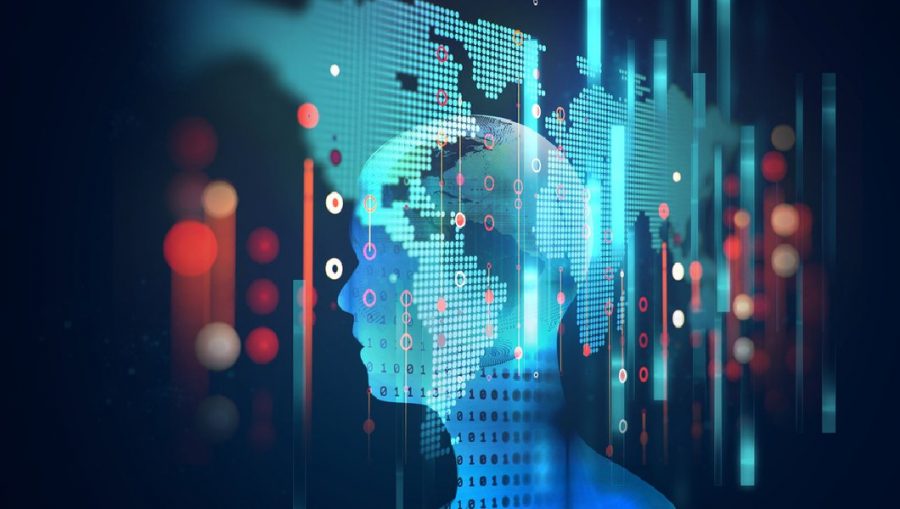The Power Behind the Plug
Exploring the Uses of Artificial Intelligence
Humans are constantly trying to improve the world around them. Working to make things more efficient, faster, and more capable. As technology becomes more and more necessary in our everyday lives, its capabilities are increasing significantly to keep up with the continually growing consumer command. Companies around the world are working to make our lives “easier” by replacing and updating everything around us using the newest and most advanced tech. Most recently, Artificial Intelligence [AI] has been pushed to the forefront of this tech-focused age, and with its ability to be used inside almost any piece of equipment with a memory chip of some sort, AI has the genuine potential of being anywhere and everywhere very soon. Even common household appliances such as your toaster now have the capabilities of Narrow AI [NAI], and although it is mostly used to ask you how crispy you want your toast, this is the first step towards an almost fully automated home.
Introduced this year at The Consumer Electronics Show [CES] in Las Vegas, Nevada, voice command seemed to be everywhere. From shower heads to drawers, from your refrigerator to an entire kitchen, multiple companies introduced products which would be able to follow verbal commands, making almost everything you do from getting up in the morning to going to work as hands-off as possible. Of course, the AI used in these products is still very basic, and very much just an Alexa or Google Home for your bathroom, but with the capabilities to turn things on and off and fluctuate temperatures, the human touch is slowly being taken out of the picture. Hypothetically, with the eventual introduction of in-home “caretaker” bots, all in-home labor will be completely taken care of for you as soon as you say “Alexa, could you do the laundry, draw me a bath, and cook a spaghetti dinner for tonight?” This, of course, is a very frivolous example of a possible use of AI, but it can certainly be helpful for those with disabilities who may have a harder time taking care of themselves without a constant human caretaker.
There are of course many less frivolous ways AI is used, but because of their separation from our everyday lives, they get far less attention. Across the globe, AI is being used in hundreds of ways to not just make our lives more comfortable, but actually elevate the quality of life for millions. At Princeton, AI is being used to help scientists find patterns in our genetic code which are extremely helpful in the field of autism research — making it much easier to study individual human genomes, working to understand the genetic causes of autism fully.
Other uses for AI include Farmbots, who will help with the development of the agricultural industry. The future of farming doesn’t lie in massive machinery, but swarms of smaller, ‘bots which can seed, tend, and harvest plants on their own. This method would not take the farmer out of the farm, but rather allow the farms to keep up with the significant agriculture rise to meet the ever-increasing demands as a growing global population. Alongside the necessary growth and development of the agricultural industry, AI will also have a huge role in the effectiveness of the production of green energy. The algorithm will be used more and more with renewable energy, by both helping power wind farms and telling solar panels to point throughout the day to maximize the amount of energy absorbed from the sun’s rays. Allowing the collection of green energy to be much easier, and much more commonplace as it becomes increasingly mandatory for our earth’s survival, and our own.
AI has been developed in the last few years to help make cancer scans more effective, and extensive surgeries less risky for the patient. The idea of “superhumans” doesn’t seem too far fetched either as AI is being developed to work inside the human brain and alongside the human nervous system to help detect seizures, heart attacks, and many other hard to predict medical emergencies such as brain tumors or internal bleeding. Of course such abilities as laser eyes are still very much fantasy, but there are ways we can stimulate nerves in the body to allow for the acceleration of healing inside the body, as well as regenerative growth of tissue for those who have lost tissue or muscles due to injury or disability.
There are many great uses of AI which will continue to be developed, and continue to make the world a better place, and with many of these advancements, we increase accessibility. We increase accessibility to our homes, our cars, our food, and our mind and body. This accessibility of brings with it the great danger of misuse, both by human hackers, and a sentient Artificial Super Intelligence [ASI]. So we must be wary, and be careful, not lazy and greedy, because almost every aspect of our lives may eventually be accessible from the tap of a button, or the pull of a plug.
Your donation will support the student journalists of The Tower and John Adams High School. Your contribution will allow us to purchase equipment and cover our annual website hosting costs.

Jonathon Zapf is a Senior at John Adams who transferred from Trinity School at Greenlawn at the beginning of his junior year in 2018 just for fun. Of course...







